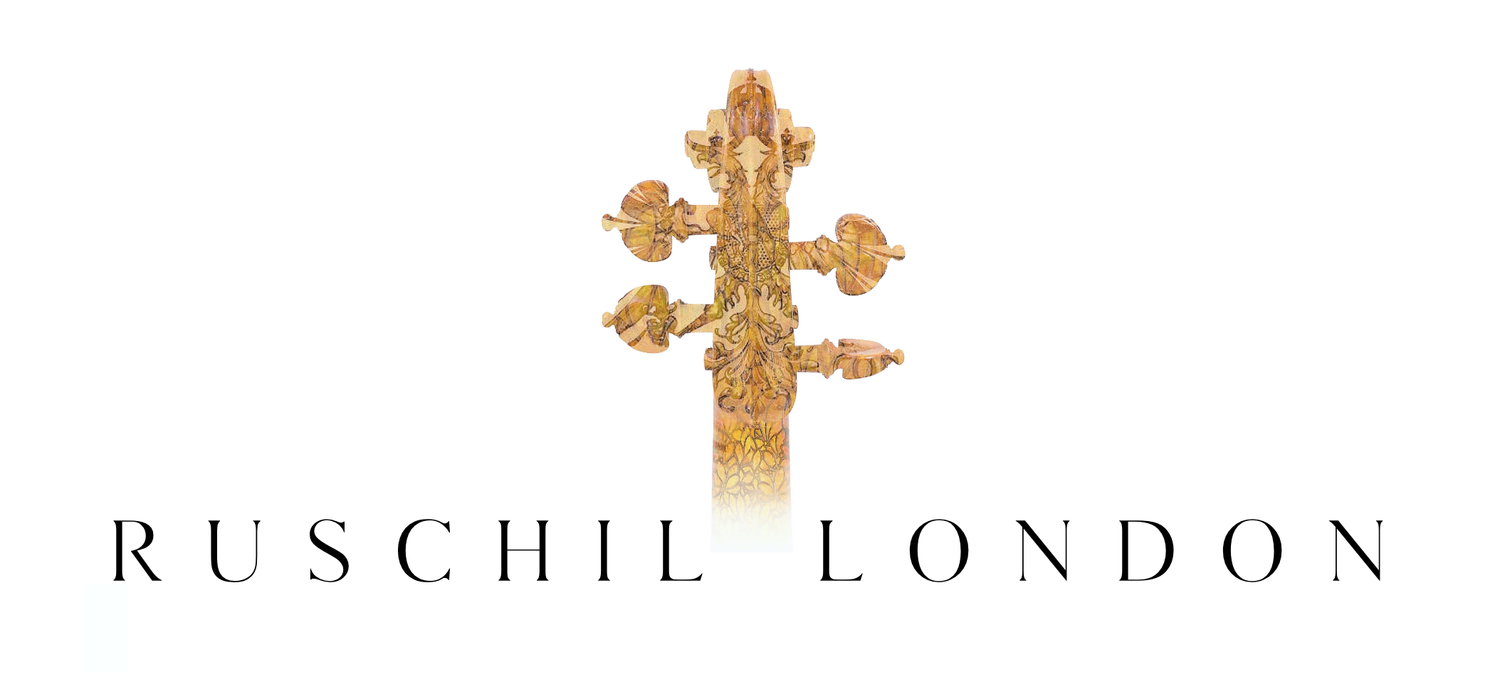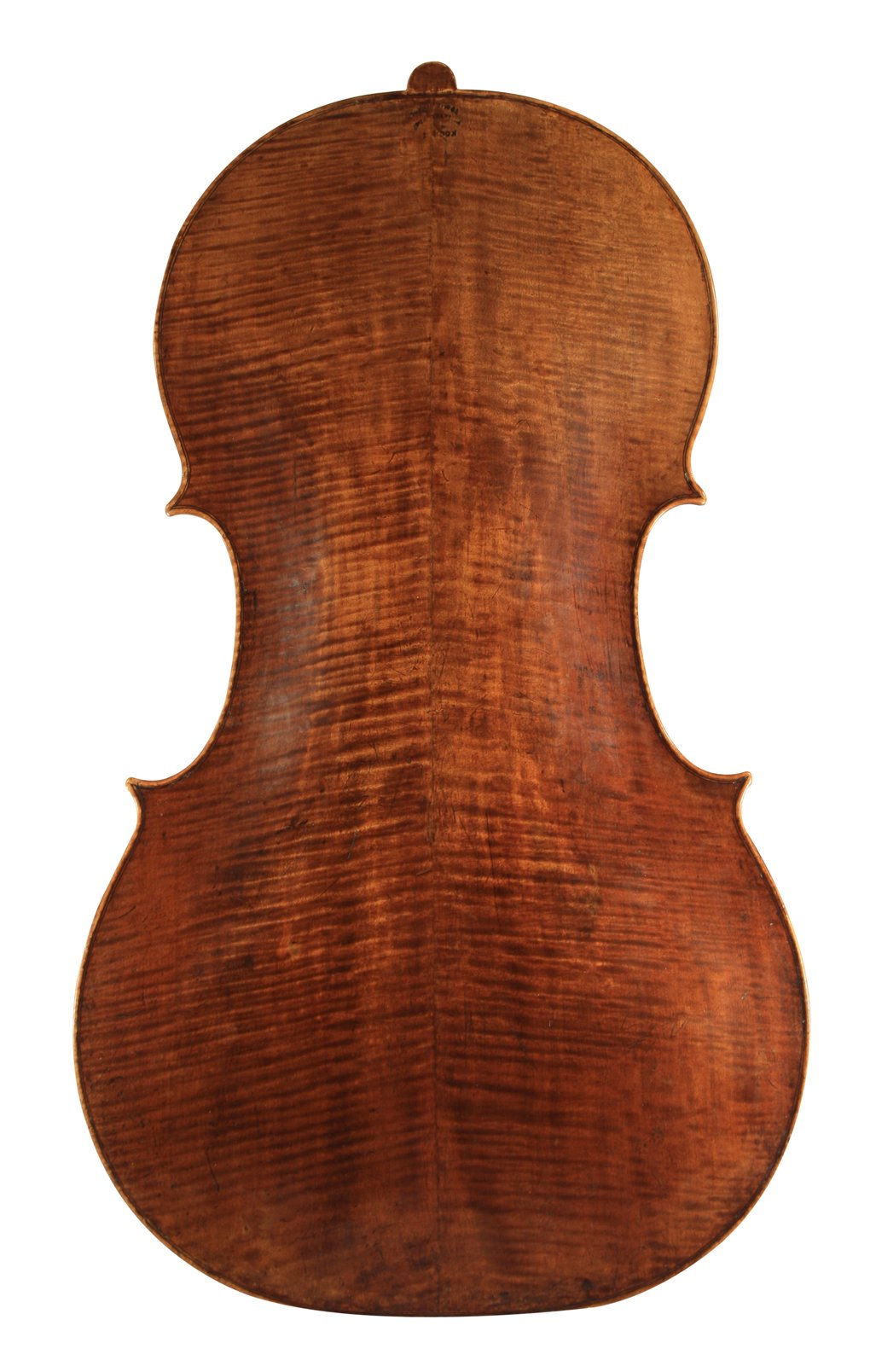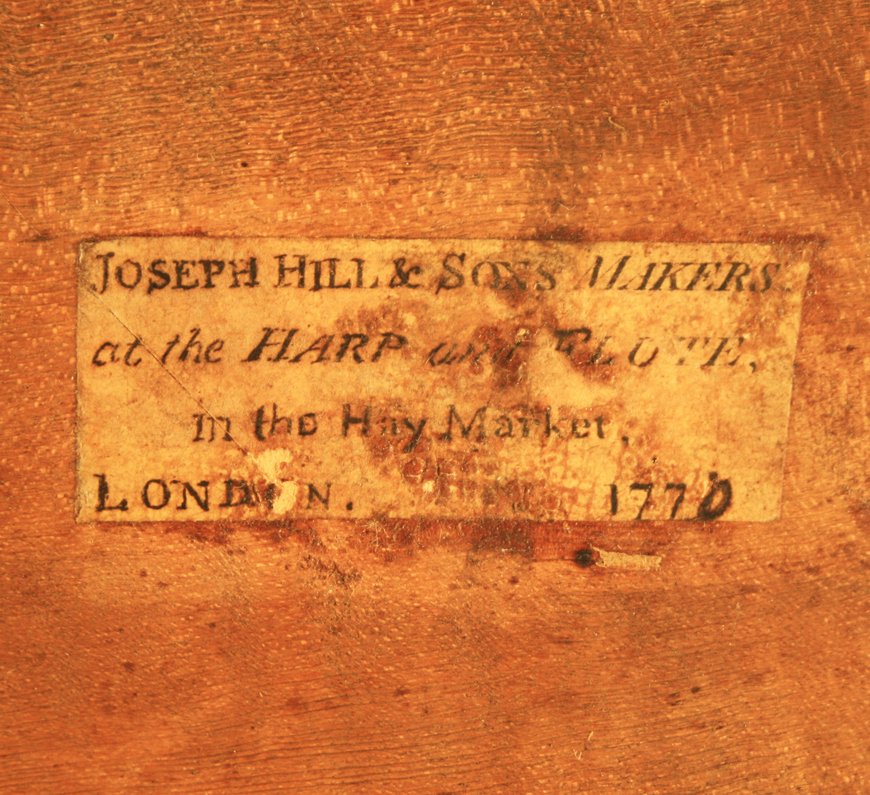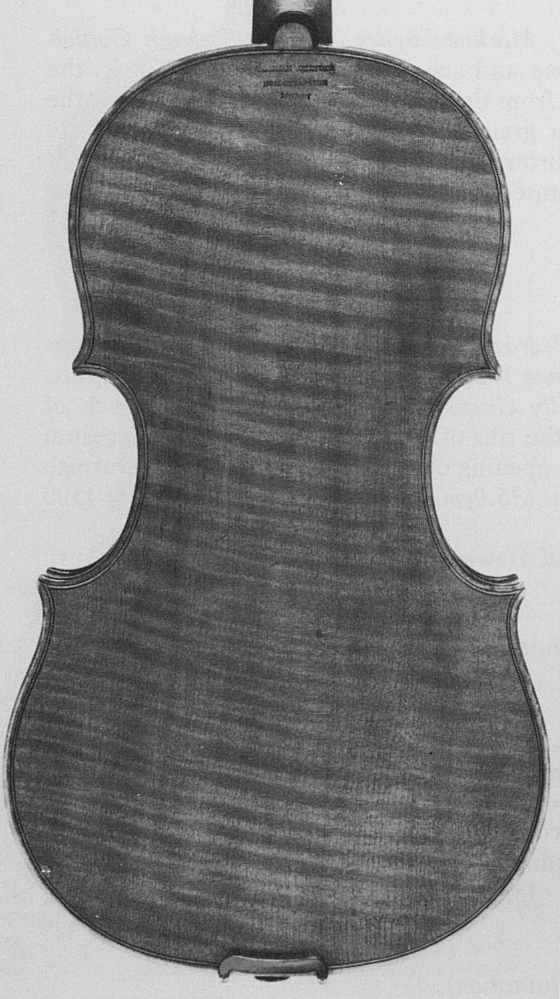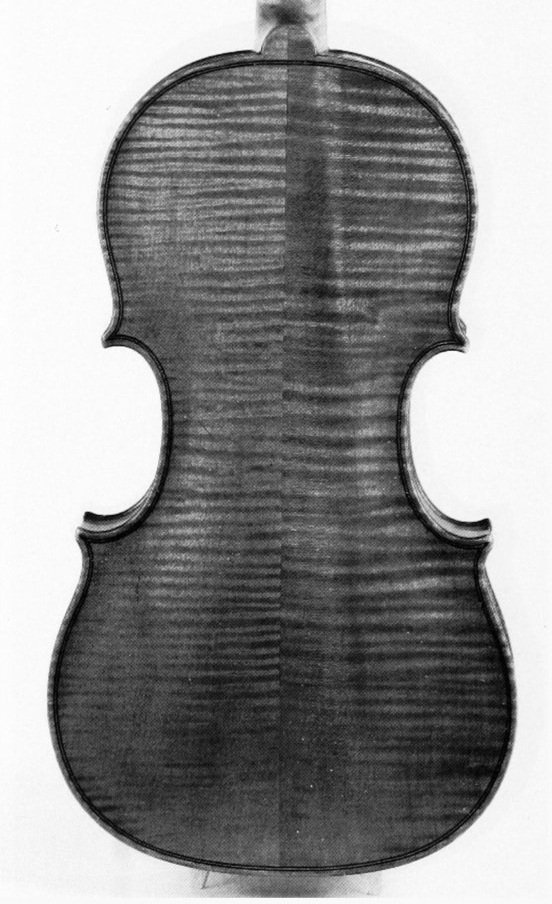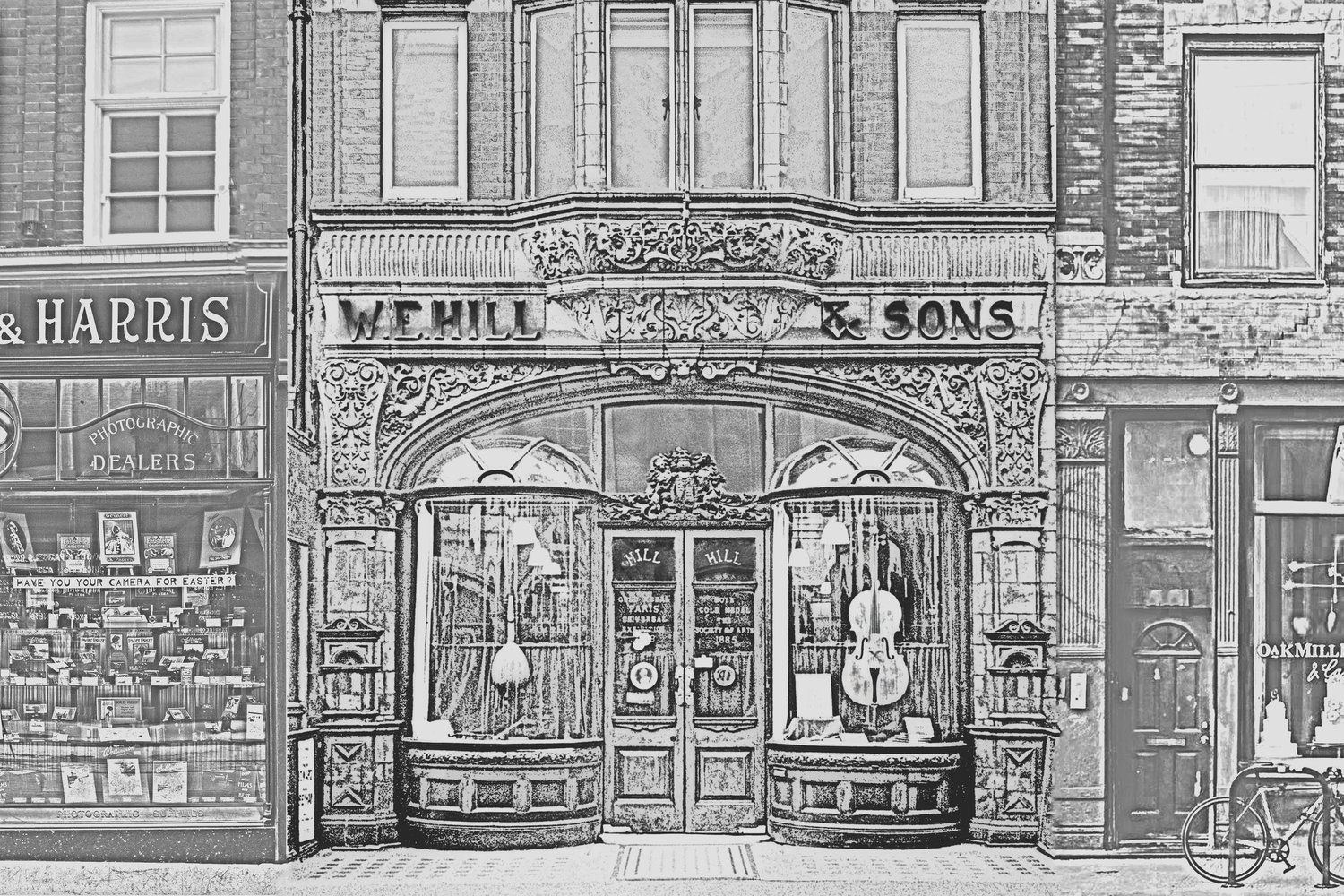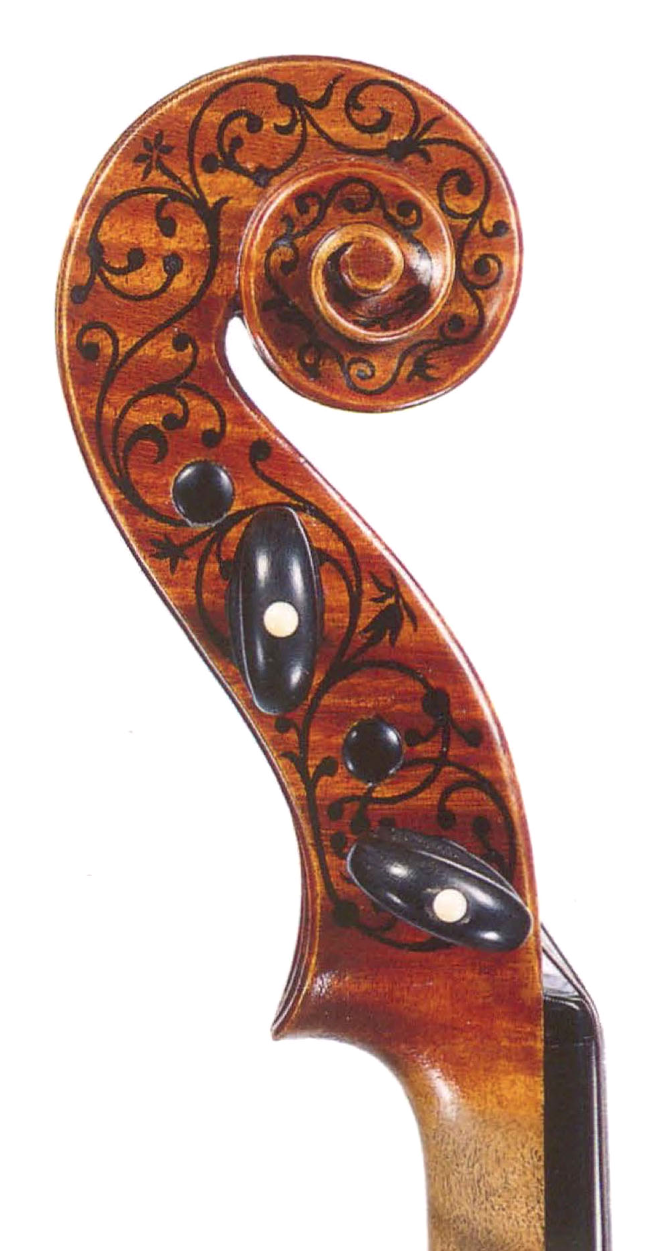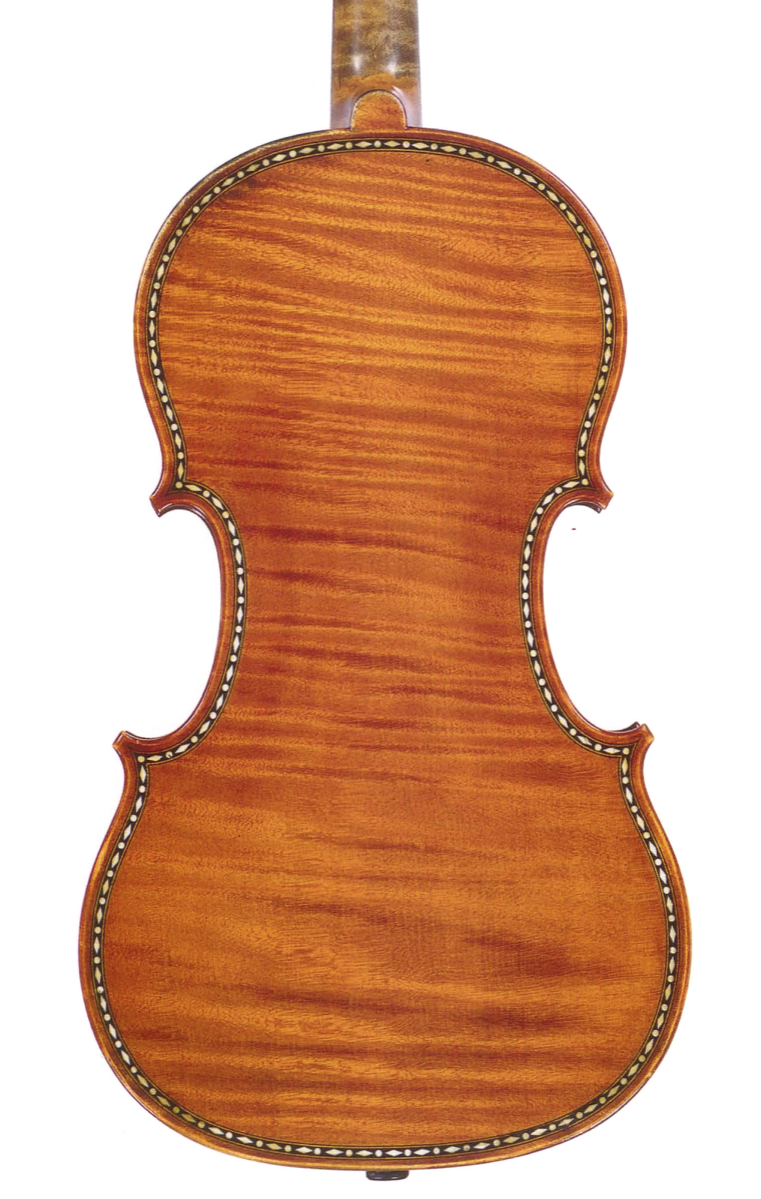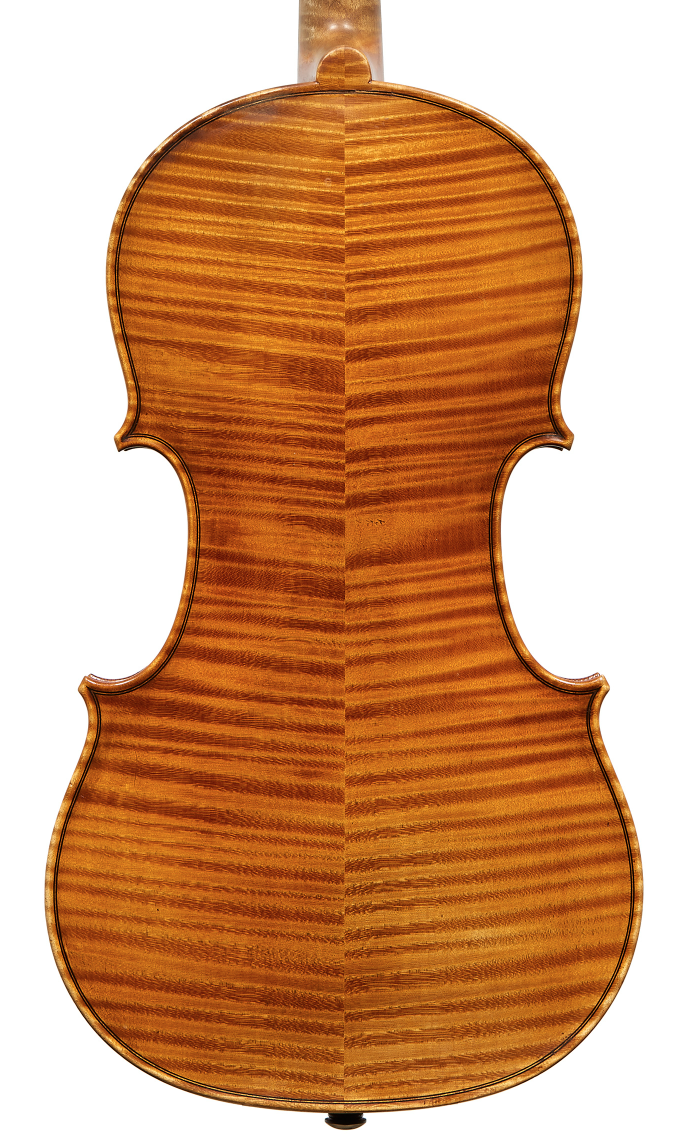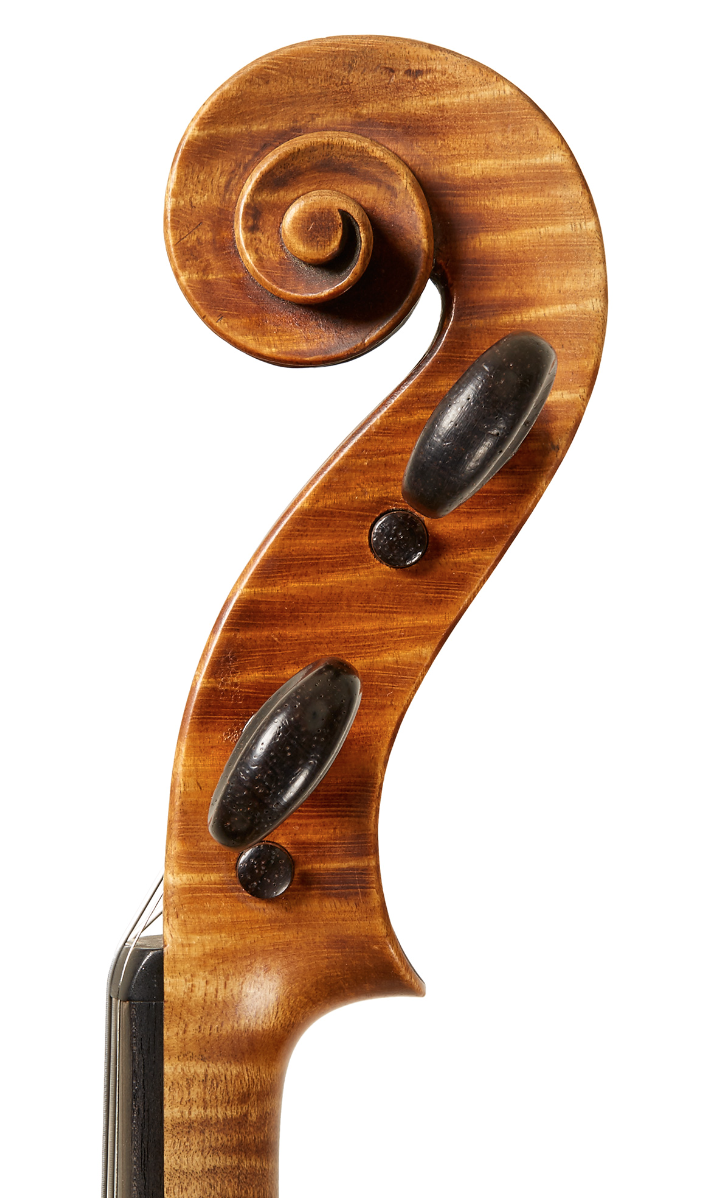W.E. Hill & Sons
The story of one of London’s most famous violin shops and families
Beginnings
Joseph Hill I, 1715-1784
Born in 1715, Joseph Hill was the first of the great Hill family of makers, restorers and experts. His earliest known label dates from 1753 and states his address as "High Holborn" in London, but it is possible that he arrived in the city from Alvechurch as early as 1746. By 1761 his workshop had relocated to Pall Mall, and in 1765 he made one final move to Haymarket, where he remained until 1780, when his oldest son Joseph II took over the shop. From about 1773 to 1776 Hill's Haymarket firm was known as 'Joseph Hill & Sons,' but the name was short-lived, and soon his six sons began working independently, five as violin makers. Hill died in 1784 and was buried in Hanover Square.
Hill is particularly known for his fine cellos, but his violas and violins are also of good quality. Violins are usually based on a Stainer model, but some Amati copies also exist. Interestingly, Hill intentionally varied the quality of his work depending on the nature of his commissions. He made trade instruments in addition to his more refined work, though he saved his best varnish for signed instruments.
A very fine cello by Joseph Hill I, 1773 was also the inspiration for the Ruschil & Bailly workshop cello, “The King Arthur, 2023”.
Below: A cello by Joseph Hill, made in London 1770
Lockey Hill, 1756-1796
Joseph Hill's fifth and most distinguished violin-making son Lockey Hill was born in 1756. He produced a great many trade instruments, often for the firms of Longman & Co. or Longman & Broderip. These instruments approximate the level of his father's lesser work, with a thin varnish and painted purfling, and vaguely follow Stainer and Amati models, though the differences between the two are barley recognisable. On occasion he used deeper golden or red varnishes, and many of his instruments bear a small notch in the inner edge of the back in the upper and lower bouts, which was filled in with maple. Other makers for the firm of Longman employed this technique, but its function is unknown.
Lockey Hill worked steadily through the 1790s, and after 1785 instruments bearing his own label are more common. His son Henry Lockey was a respected maker in his own right and took over Hill's shop after his death in 1810.
Above: Two violins by Lockey Hill made in London 1790 & 1791
Henry Lockey Hill, 1774-1835
One of the finest craftsmen of the Hill family, Henry Lockey (also known as Lockey) was the son of the first Lockey Hill. It is possible that he trained under his uncle Joseph Hill II, and it is certain that he was working for John Betts by 1806. Sometime around 1810 Prussian King Frederick William III entrusted his Stradivari cello to Betts for repair, and Hill took the opportunity to create templates of it, which presumably served as a model for his later Stradivari copy cellos. Hill took over his father's shop in 1810, and his three sons William Ebsworth, Thomas, and Joseph II were all makers, though W.E. is by far the most well known.
In general Hill's work represents a significant step forward from the trade instruments his father and grandfather are most known for. His decision to abandon the exaggerated and distorted Stainer copies favored in previous generations was a sound one, and instead he used a personalised version of the Stradivari model. His subtle varnish is of excellent quality and is in keeping with his generally elegant approach.
-
We are very fortunate to have available for sale at Ruschil & Bailly a very fine violin by Henry Lockey Hill, c.1810. The violin is historically very significant as it marks one of the earliest violins made in London to emulate the modelling of Antonio Stradivari.
Above: A fine and significant English violin by Henry Lockey Hill, c.1810.
Available at the Ruschil & Bailly violin shop, London
William Ebsworth Hill, 1817-1895
William Ebsworth Hill (W.E. Hill) was the son of the violin maker Henry Lockey Hill. He started making at the age of 14 in the workshop of his father, alongside his brother Joseph Hill II, and was soon entrusted the important job of cutting bridges and setting up instruments for the family workshop. After the deaths of his father and brother, he worked briefly for the violin maker Charles Harris, at Oxford, before returning to London to work under his own name, eventually becoming internationally recognised as W. E. Hill & Sons. He did not individually produce many instruments but gained a reputation for excellence in restoration of important instruments as well as their authentication.
From 1887 onward, after his four sons had joined the company, William Ebsworth Hill was in a position to dedicate himself to his passion for the historic masterpieces of Cremonese violin making, quickly becoming the leading Stradivari expert of his day. W.E. Hill created a highly successful business in trading valuable historic instruments. In his work he drew upon his extensive experience as a violin maker; he was also incorruptible in his professional assessment and respected as an entrepreneur.
W.E. Hill & Sons on London's New Bond Street (above) became an international venue where musicians, artists and collectors gathered. In the early 20th century, the workshop had reached an early peak, and had been awarded numerous medals and appointed among the violin and bow makers of many European rulers including the kings of England, Italy and Portugal.
The success and enduring reputation of W.E. Hill & Sons was due in no small part not only to the atelier's trade in old Cremonese masterpieces; it also offered premium bows which had been produced by a long series of specialists who worked for the Hills. Some of these master craftsmen included the young James Tubbs (1835-1921) and William Charles Retfort (1875-1970), outstanding artists who set standards in the bow making of the 19th and 20th centuries.
Above: A fine decorated violin by W.E. Hill & Sons labelled,
"William E. Hill & Sons, Makers, 38 New Bond Street, London 1889 No. 13"
During the early part of the 20th century, the New Bond Street venue was closed and the family moved to Hanwell, London where Alfred Hill, amongst others continued the family tradition. Then later in the century, in the mid-1970s, the W.E.Hill & Sons workshops were moved to the larger premises at Havenfields in Great Missenden, Buckinghamshire.
Above: The W.E. Hill & Sons family tree
Many fine craftsmen worked for the firm. For much of the 20th century, the Hill workshop employed England's best bow makers, who created bows renowned for character and consistency. Hill violins, cellos and cases are also highly regarded. Their other products included varnish cleaner, violin e-strings, rosin, peg paste, music stands, chinrests, and specialist tools.
Above: A fine W.E. Hill & Sons violin Labelled,
"William E. Hill & Sons, Makers, 38 New Bond Street, London, 1900, No. 113."
